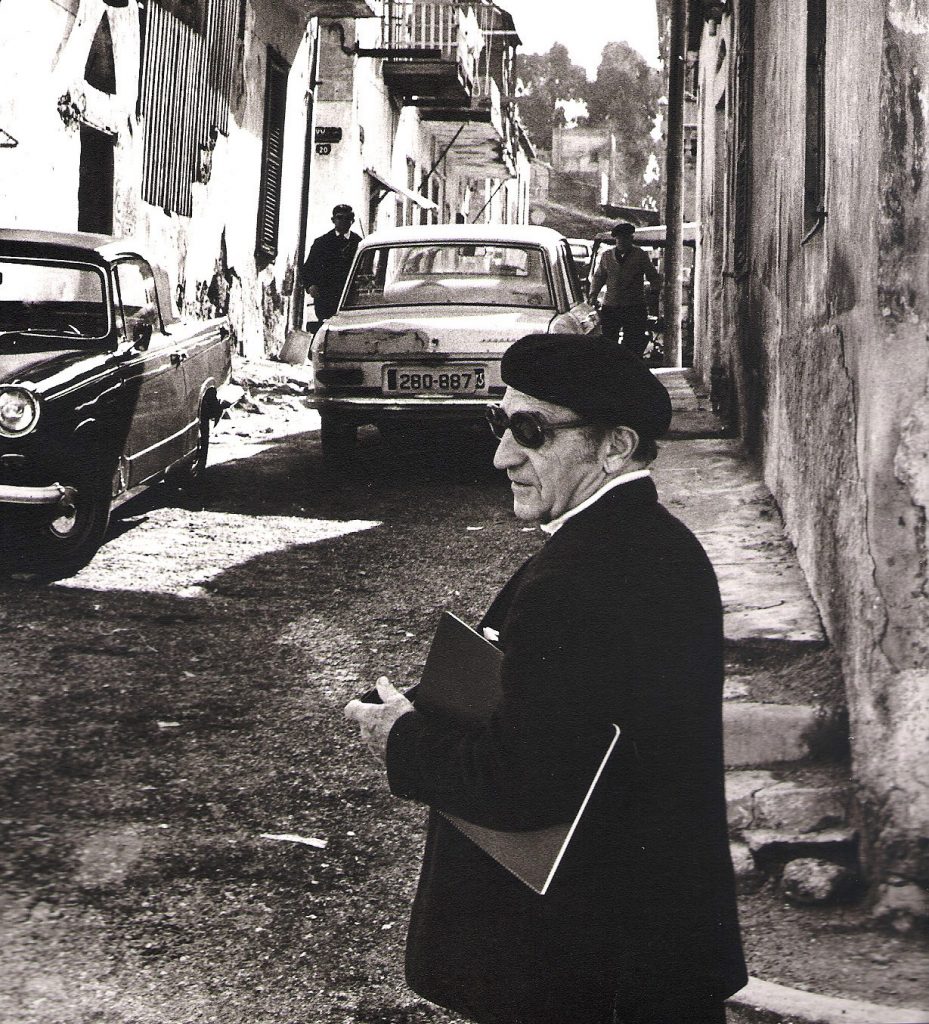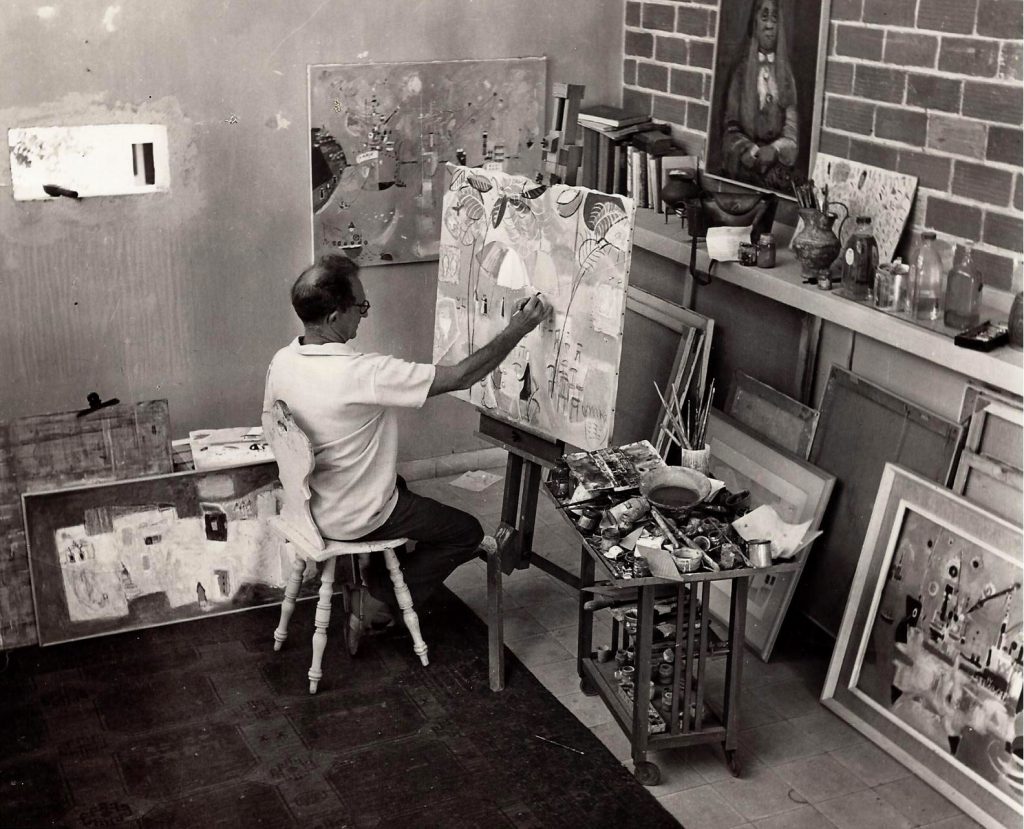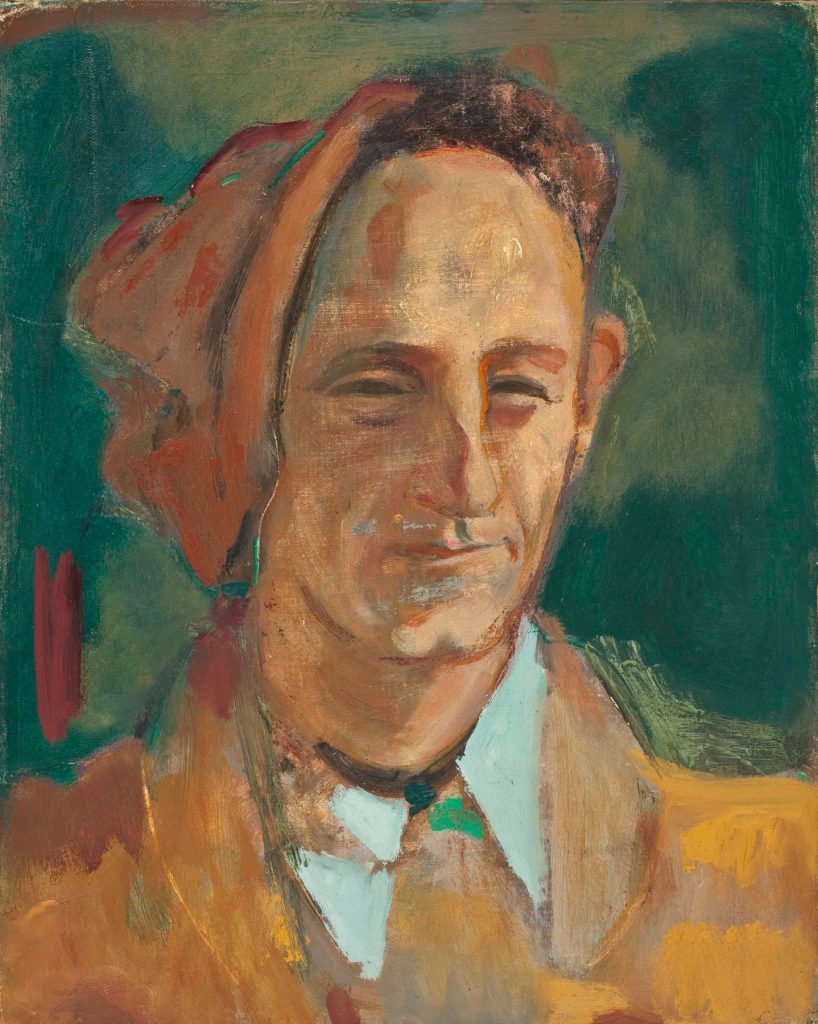5.10.1898
Nahum Gutman was born in the village Teleneshty, Bessarabia, then under Russian control. He was the fourth son to his parents, Alter and Rivka Gutman, with a sister and two brothers who were older than him and one younger brother. His mother was a housewife and his father was a Hebrew writer and educator, who published stories and novels under the pen name S. Ben Zion.
1903
At the age of 5, Nahum Gutman moved with his family to the city Odessa, where his father was called to teach in the “Cheder Ha’metukan” – a school in which the teaching language was Hebrew rather than Yiddish. The poet Chaim Nachman Bialik used to visit the school and play with the children. He especially loved the teacher’s son, Nahum. He recognized his natural painting flair and was like a second father to him.
1905
The family immigrated to Eretz Israel (Land of Israel). The father worked as a teacher in the school for girls in Neve Tsedek. At first, the family lived in the school’s building where Nahum and his brothers studied. Later, when the family, moved to Bustanai Street in Neve Tsedek. Nahum began studying at the “Ezra” school.
1913
When Nahum Gutman turned 15, he quit his studies in Gymnasia Herzelia high school and came to Jerusalem to study in the Bezalel School of Arts and Crafts. Among his teachers were Boris Schatz and Abel Pan.
1916
During World War I, the studies in Bezalel had stopped and Nahum went, along with his friends, to work in the wineries and orange orchards of Petach Tikva, Rehovot and Rishon Le’zion. Later he recaptured his memories from those days in his book “The Summer Holiday or: The Crates’ Mystery” (“Hachofesh Hagadol O: Ta’alumat Ha’argazim”.
1917
Near the end of WWI, the Ottoman Empire, then ruling the region, deported the Jewish inhabitants of Tel Aviv to settlements in the Galilee and the Sharon. The city remained closed and deserted. Nahum was also deported from his city, but later returned to it as a watchman. His memories of the period were written and illustrated in his book “Path of the Orange Peels”.
1918
When the war ended, the English took over the land and the British mandate period began. Nahum volunteered to the “Hebrew Legion” and served as a guard, watching over Turkish war prisoners in a prisoners camp in Egypt. He captured the prisoner soldiers, camp existence and atmosphere in a series of his drawings.
1920
Released from the British Army, Nahum went to Europe to continue his art studies. He studied in Vienna, Paris and Berlin, where he learned printing and engraving techniques and perfected his drawing skills. In Berlin he met a group of Hebrew writers, friends of his father, and began illustrating their books. His first illustrations were done for his father, S. Ben-Zion’s books, and for children’s poems by Bialik and Tchernichovsky.
1926
Nahum Gutman returned to Eretz Israel and became part of a group of artists who were focused on painting landscapes. They created “The Eretz-Israeli Style”. As a major artist in that group, Gutman participated in all the important exhibitions in the country.
1928
Nahum Gutman married Dora Yaffe, mother of his only son, Menachem (Hemi).
1929
Nahum Gutman designed the stage settings and costumes for the play “Crown of David” performed at the “Ohel Theater”. In 1932 he designed costumes and settings for the play “Shabtai Tzvi”.
1931
Gutman accepts the position of an illustrator for the children’s newspaper “Davar Le’yeladim”. The paper began as a children’s supplement of the workers’ paper “Davar”, and later became the children’s weekly magazine. Gutman worked as a member of the editorial staff and house illustrator, for 35 years. He drew thousands of illustrations for stories, poems and various articles and also published stories and articles of his own.
1933-34
Nahum Gutman painted the floats and settings for the famous Tel Aviv Purim parade, “Adloyada”. People from all over the country came to see the Purim happenings in Tel Aviv.
1934-35
Nahum Gutman was sent to South Africa, by the Foreign Office, to paint a portrait of General Smuts. From his sojourn in the African continent, he sent illustrated stories to “Davar Le’yeladim”, which developed into an adventure story in the African jungle. From those stories was born Gutman’s first book, “In the Land of Lobengulu King of Zulu”.
1939
The book “In the Land of Lobengulu King of Zulu” (Be’eretz Lobengulu Melekh Zulu) was printed and published. Gutman become a children books writer in addition to being a painter and illustrator.
1942
His book “Beatrice or: A Tale that Began with a donkey and Ended with a Ruthless Lion” (Beatrice O Ma’ase Shetchilato Chamor Ve’sofo Ari Dores) was published. In the book, Nahum Gutman dealt with his feelings of loss and injustice, surrounding the death of his mother.
1944
His book “Adventures of a True Blue Donkey” (Harpatkaot Chamor Shekulo Tchelet) was published. Nahum Gutman was very fond of donkeys, with their simplicity and innocence and in this book the donkey becomes a literary hero, by which the author criticized different aspects of society.
1946
“Nahum Gutman received the “Lamdan Award for Children’s Literature.
1948
During the War of Independence Nahum Gutman served as a military painter. He drew fragments from the life of the Palmach members and portraits of the soldiers and their officers. In his book “Two Stones that are One”‘ he shares memories from his adventures as a military painter. Later, the book “We Were Like That” was published, with drawings of the soldiers.
1956
Nahum Gutman won the “Dizengoff Award for “Art.
1959
For the city of Tel Aviv 50th birthday, Gutman wrote the book “A Little City and Few Men within It” (Ir Ketana Va’anashim Ba Me’at), in which he collected stories of his memories from the birth of the city and its first inhabitants. He painted the painting “Early Days” for the jubilee exhibition, that took place at the Exhibition Grounds (Ganei HaTa’arucha). The length of the painting was over 20 meters.
1961
Nahum Gutman created his first mosaic, for the Chief Rabbinate Building in Tel Aviv. In 1966 Gutman created a huge mosaic wall on the Shalom Tower building, telling the story of Tel Aviv. The mosaic was made in Verona, Italy, a city with a long tradition of mosaic work. In 1967 he created a mosaic wall on the new Gymnasia Herzelia building and in 1976 he created a mosaic fountain on Bialik Street, decorated with images telling the historic events in Jaffa and Tel Aviv.
1962
Nahum Gutman received the “Hans Christian Andersen” Honorary award for children’s literature for his book “Path of the Orange Peels”.
1964
Received the “Yatziv Award” for his contribution to the Israeli illustration and his work in “Davar Le’yeladim” through the years.
1969
Received the “Fichman Prize for Literature and Art”, for the whole of his literary work.
1970
Nahum Gutman began sculpting with clay. His ceramic sculptures are always based on the hollow pitcher and present themes based on eastern images which he loved, biblical heroes and figures from the first days of Tel Aviv.
1978
Nahum Gutman won the “Israel Award” for his contribution to children’s literature.
1980
Nahum Gutman passed away in Tel Aviv on the 28th of November, 1980 at the age of 82. A short time before his death, the writer and researcher Ehud Ben Ezer managed to write down Gutman’s life story as told by him. Ben Ezer revised the story and published it under the name “Between Sand Dunes and Blue sky” (Bein Cholot Ve-Kchol Shamayim).
–




